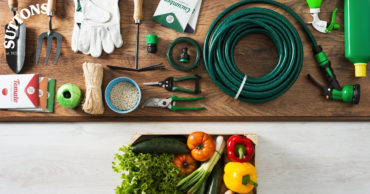
Here are my top tips for selecting secateurs:
For pruning anything from sappy, soft growth to woody twigs, a decent pair of secateurs is essential. To perform well, they should have a good-quality blade that keeps a very sharp edge, feel comfortable in your hand and have a catch that works smoothly.
If you have a weak grip or smaller hands, it’s particularly important to get a pair that is easy to use. If you’re left-handed, look for secateurs with a central safety catch – small metal safety catches on the left-hand side of the secateurs will be a pain to reach.
There are several types of secateurs available:
- Bypass secateurs have a scissor action, ideal for everyday pruning. They are great if you have a lot of precision pruning to do, as the design of the blades makes it easy to get into small gaps and to prune side stems flush with main stems. Don’t use your bypass secateurs to cut through stems thicker than the recommended cutting diameter – this can easily cause damage. If you have some thicker branches to chop through, loppers or a pruning saw are better alternatives.
- Anvil secateurs have a flat surface that the blade cuts onto, so are good for thicker stems and woody pruning. They crush as well as cut, so will not leave such a clean cut, particularly on softer stems. The design of anvil secateurs means that their lower flat blocks can get in the way in tight corners. It also makes it very difficult to cut side stems flush with main stems.
- Ratchet or geared secateurs cut in stages and are great if you have a weak grip, as you don’t need to apply much pressure to make the cut.
- Rolling-handle secateurs are designed to protect your hands from repetitive strain injury if you have a lot of pruning to do.
- Cut-and-hold pruners hold the stem after cutting, so you don’t have to bend down to pick up clippings.

Last Updated on July 14, 2015 by Suttons Horticultural Team


